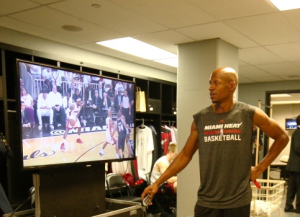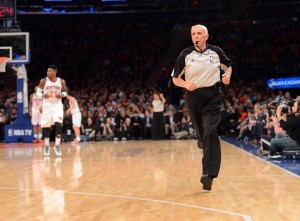Technology: The End of the Home Court Advantage?
Technology might just be the greatest driving force of the modern area. From jet engines to wireless broadband, new and refined technologies have revolutionized the way we travel, communicate, and interact with the world around us. The United Nations estimates that almost 40% of the world has access and users in the developing world have increased from 8% to an estimated 31%. China alone has an estimated 648,000,000 internet users, which is more citizens than live in the entire United States. If we know anything about technology, it’s that it is now virtually pervasive. The changes to our society and culture influenced by technology are endless, and it will likely take time before we understand their full scope.
An interesting article in ESPN recently suggested that technology, in various forms, might be affecting the NBA by eliminating or at least reducing home court advantage. How does that make sense? It’s not as if technology has eliminated teams from having their own courts, in their home city, with the hometown crowd, etc. Yet statistics show that the home teams’ win percentage has dropped from a strong 68.5% in 1976-1977 to a flimsy 53.7% this year. The last two years have seen the biggest two-year drop in home teams’ average winning percentage. How could technology make home teams less comfortable in their own arenas? The ESPN article puts forward three possible reasons for this phenomenon: technology in officiating, technology in visiting teams’ preparation, and technology in the crowd.
The Home Crowd
Technology has had a twofold, devastating effect on weeding out enthusiastic and engaged home crowd fans. On the one hand, the spread of affordable HD television and illegal streaming services have many fans opting to stay home and avoid paying rising ticket and concession prices.
On the other hand, with basketball’s popularity steadily rising, basketball games are becoming more of a scene with not-so fans buying up the club and court side seats. You will regularly see patrons sitting courtside looking up to watch the game only when there’s an opportunity to catch a free throw Snapchat. With fewer rabid fans at games, it’s possible that home crowds haven’t felt the same fervent support in recent years.
Preparation
Technology has made pregame scouting and preparation much easier and much stronger for visiting teams. With advances in biometrics and nutrition, visiting teams can mitigate many of the negative effects of travel that have affected road teams in the past. Not to mention, one of the biggest shifts in visiting teams’ win percentage occurred when teams made the shift from flying coach to charter.
It has also changed the game of scouting. Digital media has made scouting much easier, relieving the need to record limited footage on VHS tapes. This allows visiting teams to study their counterparts much more quickly and effectively, better preparing them for their opponents’ tendencies.
Officiating
A paper published by Matthias Sutter and Martin G. Kocher in September showed a tendency for referees to develop a home team bias. There was actually a correlation between the level of bias shown for the home team and the level of separation between the court and the crowd. The closer the crowd, the heavier the bias.
With a greater emphasis on making objectively accurate calls in big games, the NBA has developed a replay review system where all major plays are reviewed at a league office in New Jersey. This potentially alleviates some of the bias that officials might have in making game-changing, late game calls.
There is no doubt that technology has an imprint in all facets of our lives in the modern era, but it is still fascinating to examine the subtle ways in which it manifests. It will certainly be interesting to see whether this trend continues for home teams and whether that will potentially factor into playoff seeding.”


